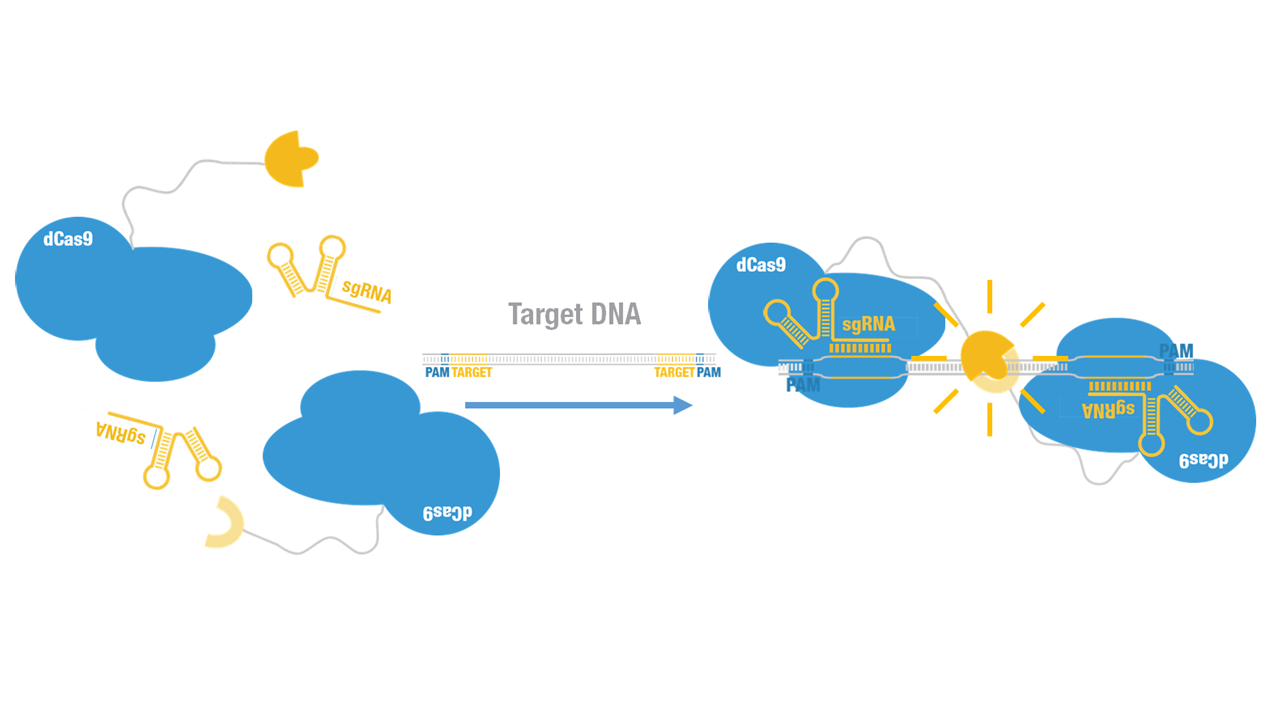Difference between revisions of "Part:BBa K1689008"
| Line 34: | Line 34: | ||
==References== | ==References== | ||
1. Lei S. Qi, Matthew H. Larson, Luke A. Gilbert et al. Repurposing CRISPR as an RNA-guided platform for sequence-specific control of gene expression. Cell, 2013, 152: 1173-1183. | 1. Lei S. Qi, Matthew H. Larson, Luke A. Gilbert et al. Repurposing CRISPR as an RNA-guided platform for sequence-specific control of gene expression. Cell, 2013, 152: 1173-1183. | ||
| + | |||
2. Kathryn E. Luker, Matthew C. P. Smith, et al. Kinetics of regulated protein–protein interactions revealed with firefly luciferase complementation imaging in cells and living animals. PNAS, 2004, 101: 12288-12293. | 2. Kathryn E. Luker, Matthew C. P. Smith, et al. Kinetics of regulated protein–protein interactions revealed with firefly luciferase complementation imaging in cells and living animals. PNAS, 2004, 101: 12288-12293. | ||
Revision as of 19:30, 18 September 2015
dCas9-N-luc
dCas9-Nluc fusion protein ORF
A catalytically dead Cas9 (dCas9), when coexpressed with a guide RNA, generates a DNA recognition complex which can binds to any targeted gene [1]. Firefly luciferase, widely used as a reporter, is split into two fragments, namely Nluc and Cluc [2]. Each protein fragment by itself is inactive, when two fragments are reassembled, the enzymatic activity of the original protein would be reconstituted, providing easily measurable read out.
2015 Peking iGEM fused Nluc to C terminus of dCas9 (Figure 1). Guided by sgRNA, it binds to target DNA sequence. Together with dCas9-Cluc (BBa_K1689007):sgRNA complex, our paired dCas9 (PC) reporter system was constructed (Figure 2) which converts invisible sequence information into measurable bioluminescence.
Figure 1. Configuration of dCas9-Nluc fusion protein.
Figure 2. Schematic of the paired dCas9 (PC) reporter system.
We invented a new protocol for testing our PC reporter system (see Methods). Provided that initial binding of dCas9 depends on the protospacer adjacent motif (PAM, a short 3’ motif adjacent to target sequence), four sets of sgRNA orientation settings were also tested (Figure 3a). To find out how split luciferase-dCas9 fusion architecture influences our PC reporter system, we constructed and tested Cluc-dCas9(BBa_K1689009), dCas9-Cluc (BBa_K1689007) fusion protein to respectively pair with dCas9-Nluc (Figure 3b).
a
b
Figure 3. Test on dCas9-Nluc fusion protein across four different sgRNA orientations. (a) 4 different sgRNA orientation settings. In orientation PAM-out, the pair of PAM sequences are distal from the spacer sequence, with the 5' end of the sgRNA adjacent to the spacer; in orientation PAM-in, the pair of PAM sequences are adjacent to the spacer sequence, with the 3' end of the sgRNA in proximity to the spacer; in orientation PAM-direct 1 and PAM-direct 2, one PAM sequence is adjacent to and another distal from the spacer. (b) Test on dCas9-Nluc fusion protein paired with Nluc-dCas9 and dCas9-Nluc across four different sgRNA orientations.
References
1. Lei S. Qi, Matthew H. Larson, Luke A. Gilbert et al. Repurposing CRISPR as an RNA-guided platform for sequence-specific control of gene expression. Cell, 2013, 152: 1173-1183.
2. Kathryn E. Luker, Matthew C. P. Smith, et al. Kinetics of regulated protein–protein interactions revealed with firefly luciferase complementation imaging in cells and living animals. PNAS, 2004, 101: 12288-12293.
Sequence and Features
- 10COMPATIBLE WITH RFC[10]
- 12INCOMPATIBLE WITH RFC[12]Illegal NheI site found at 1176
- 21INCOMPATIBLE WITH RFC[21]Illegal BamHI site found at 3
Illegal BamHI site found at 3455 - 23COMPATIBLE WITH RFC[23]
- 25COMPATIBLE WITH RFC[25]
- 1000COMPATIBLE WITH RFC[1000]




